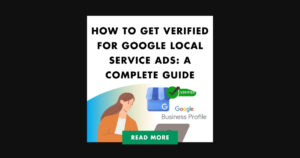eCommerce Blogging Success: Essential Tips & Strategies
Mastering eCommerce blogging is essential for any online business owner looking to expand their reach and grow their brand. A well-crafted blog can not only increase organic traffic but also establish your company as an industry leader. This post will look into the particulars of forming successful blogs, connecting with readers by means of case studies, and constructing a triumphant content marketing plan.
We will explore techniques that improve readability and discuss the importance of establishing an effective blogging schedule. Additionally, we’ll share top tools and resources designed specifically for ecommerce entrepreneurs to help boost performance while showcasing brand identity through creative storytelling.
Lastly, we’ll cover optimization strategies such as integrating calls-to-action in blog posts for increased conversions and leveraging automation tools to streamline the eCommerce blogging process. Stay tuned as we dive deep into staying informed on industry trends and best practices by following leading ecommerce blogs offering valuable insights on continuous learning opportunities.
Table of Contents
Mastering eCommerce Blog Writing
In the digital age, mastering eCommerce blog writing is a vital skill for business owners. High-quality content full of marketing tips, success stories, lessons learned, and the latest eCommerce trends are essential for engaging readers and driving more people to your site.
Marketing Tips for Successful Blogs
To create an effective eCommerce blog, focus on providing valuable information that helps your audience solve problems or improve their businesses. Share actionable advice on topics like SEO optimization, email marketing strategies, and social media management. By offering practical solutions backed by industry expertise, you’ll establish credibility with your readers while also boosting traffic to your website.
Sharing Success Stories and Lessons Learned
Showcase real-life examples of how customers have used your products or services to achieve their goals. These success stories not only demonstrate the value of what you offer but also inspire potential buyers who may be facing similar challenges in their own businesses. Additionally, don’t shy away from discussing any obstacles encountered along the way – sharing lessons learned can help others avoid making the same mistakes.
Keeping Up with The Latest eCommerce Trends
- Evolving technology: Stay informed about emerging tools and platforms that can streamline operations or enhance customer experiences in online retail environments.
- Social commerce: Explore innovative ways brands are leveraging social media channels like Instagram Shopping features to drive sales directly through these networks.
- Sustainability initiatives: Discuss how companies within the eCommerce space are adopting eco-friendly practices such as reducing packaging waste or offsetting carbon emissions.
By staying up-to-date on the latest eCommerce trends, you’ll be better equipped to offer relevant insights and advice that can help your readers grow their businesses in an ever-changing digital landscape.
Key Takeaway:
Mastering eCommerce blog writing is crucial for business owners to engage readers and drive traffic. Valuable information, success stories, lessons learned, and keeping up with the latest eCommerce trends are essential for creating effective blogs that establish credibility with readers and help them grow their businesses in a constantly evolving digital landscape.
Developing a Content Marketing Strategy
To craft an effective content marketing strategy for your eCommerce business, employ formatting techniques that enhance the visual appeal and readability of blog posts. Then, focus on formatting techniques that make your blog posts visually appealing and easy to read. Use bulleted lists, numbered lists, tables, and white space between paragraphs to improve readability and user experience.
Blog Formatting Techniques
- Bulleted Lists: Break up large blocks of text with bullet points to make information easy to digest.
- Numbered Lists: Use numbers to organize steps or rankings and help readers follow along.
- Tables: Display data or comparisons in a clear and concise manner using tables.
- White Space: Create visual breathing room by leaving ample space between paragraphs and other design elements on the page.
Along with formatting, consider how often you plan to publish blog posts. A consistent posting schedule can keep readers engaged with fresh material and boost your site’s SEO ranking by signaling search engines that your website is active and regularly updated with new content.
Publishing Frequency Considerations
- Determine the optimal frequency based on industry trends, audience preferences, and available resources for creating high-quality content.
- Create an editorial calendar outlining planned topics and publication dates. Check out BigCommerce Blog for tips on creating an effective editorial calendar.
- Maintain flexibility within your schedule to accommodate timely subjects or unexpected events.
- Analyze engagement metrics (such as page views, time on site, and social media shares) to determine the effectiveness of your publishing frequency and make adjustments as needed.
By implementing these strategies in your ecommerce blog, you can create a content marketing plan that engages readers, drives traffic to your site, and ultimately boosts sales for your eCommerce business.
Top-notch Tools & Resources for Ecommerce Business
Streamline your ecommerce business processes and stay ahead of the competition by utilizing top-notch tools and resources. These platforms offer not only automation of numerous tasks, but also give valuable information regarding industry trends, advertising tactics and user behaviour.
Printful – Print-on-Demand Services
Create custom products without worrying about inventory management or shipping logistics with Printful. Provide a range of custom items like t-shirts, mugs, phone cases and more with full authority over product design and pricing.
Sumo – Automation Tool for Business Growth
Drive traffic to your website and convert visitors into customers with Sumo. Automate tasks with features like email capture forms, social sharing buttons, heat maps for visitor analysis, and more.
Smile.io – Customer Rewards Platform
- Reward loyal customers: Boost customer retention rates with a well-designed loyalty program using Smile.io.
- Increase referrals: Incentivize word-of-mouth marketing through Smile.io’s referral program feature which awards points or discounts to customers who refer their friends and family members.
Follow industry-leading resources such as A Better Lemonade Stand Blog or The Ecommerce CEO Blog for expert advice on building a successful online store from scratch and scaling it into a profitable venture.
Brand Identity Development Strategies
As an ecommerce business owner, you know that developing a strong brand identity is crucial for success. But where do you start? Look no further than industry experts who share their insights on ecommerce blogs. For example, Harry’s co-founders took a hands-on approach by interviewing barbers and crafting Spotify playlists to better understand their target audience.
Harry’s Co-Founders’ Approach to Brand Identity
By conducting in-depth research on their target audience, Harry’s co-founders were able to create a unique and authentic brand image. They interviewed barbers and customers to better understand their needs, leading to a more effective marketing strategy for their ecommerce business.
Crafting Content That Resonates with Your Audience
- Create Buyer Personas: Develop detailed profiles of your ideal customers based on demographics, interests, and pain points. Use these personas as guides when creating blog posts or other content for your site.
- Tell Stories: Share personal anecdotes or customer success stories that demonstrate how your products have made a difference in people’s lives. These narratives can be powerful tools for connecting with readers on an emotional level.
- Showcase Expertise: Offer valuable tips and advice related to your industry or niche. By leveraging your expertise and knowledge in the industry, you can gain trust from potential customers that will lead to increased sales.
Incorporating these tactics into your ecommerce blogging strategy can help you develop a strong brand identity that resonates with your target audience. By recognizing what customers want and like, you can create content that encourages involvement and eventually translates to more sales for your business. Don’t forget to leverage social media to amplify your message and reach a wider audience.
Key Takeaway:
Developing a strong brand identity is crucial for success in ecommerce. Harry’s co-founders interviewed barbers and customers to better understand their needs, leading to a more effective marketing strategy. Crafting content that resonates with your audience by creating buyer personas, telling stories, and showcasing expertise can help develop a strong brand identity that drives engagement and ultimately leads to increased sales for your business.
Showcasing Company Values & Social Stances
Use your ecommerce blog to showcase your brand’s personality and connect with customers. Share employee profiles and interviews to give your audience a glimpse into your company culture. But don’t stop there. Take it a step further by discussing your company values and taking a stand on social issues.
Discussing Company Values in Blog Articles
Articulate your company’s core beliefs through engaging blog posts. If sustainability is important to your ecommerce business, create content around eco-friendly practices and products that align with this value. This not only connects you with like-minded consumers but also sets you apart from competitors.
Taking a Stand on Social Issues
Address relevant social issues in your ecommerce blog. Write opinion pieces or collaborate with influencers who champion causes close to your brand’s ethos. Outdoor retailer Patagonia is a great example of a brand that regularly publishes articles advocating for environmental conservation efforts on their blog.
- Benefits: Demonstrating awareness of pressing societal concerns helps humanize your brand while fostering deeper connections with potential customers.
- Risks: Be prepared for potential backlash when taking a stand on controversial topics. Nevertheless, the advantages may surpass any dangers when your position is consistent with that of your intended audience.
By incorporating company values and social stances into your ecommerce blog content, you can create meaningful connections with customers while differentiating yourself from competitors in an increasingly crowded marketplace.
Top Ecommerce Blogs & Platforms to Follow
Stay informed about industry trends and best practices by following these top ecommerce blogs:
- Wix – a website builder with expert advice on web design, SEO optimization, and marketing techniques.
- Ecwid – an e-commerce facilitator site with valuable insights into running a successful online business.
- HubSpot – a resource for inbound marketing strategies, lead generation tactics, email campaigns, social media, and more.
- Popupsmart – a no-code popup tool builder with expert advice on creating eye-catching popups, optimizing your site for mobile users, and implementing effective lead generation strategies.
- Shopify – an e-commerce platform with articles covering everything from product sourcing to customer service.
- WooCommerce – a simple customizable plugin for WordPress aimed at helping users develop social engagement strategies to attract new customers.
Wix – Your Go-To Resource for Website Building
For those looking to create an enticing eCommerce experience, Wix provides a wealth of knowledge on web design, SEO optimization and marketing strategies. Their expert advice on web design, SEO optimization, and marketing techniques will help drive traffic to your site.
Ecwid – Insights into Running a Successful Online Business
The Ecwid blog covers every aspect of managing an eCommerce store, from product sourcing to customer service. They also provide useful tutorials on how to use their platform effectively.
HubSpot – Inbound Marketing Strategies for Your Ecommerce Business
Although HubSpot isn’t specifically tailored towards eCommerce businesses, their articles covering inbound marketing strategies, lead generation tactics, email campaigns, social media, and more can be applied to your online store.
Popupsmart – Improve Your Website’s Conversion Rates
The Popupsmart blog is a goldmine for those looking to improve their website’s conversion rates. Learn how to create eye-catching popups, optimize your site for mobile users, and implement effective lead generation strategies with their expert advice.
Shopify – Everything You Need to Know About Ecommerce
The Shopify blog covers everything from product sourcing to customer service, as well as innovative marketing techniques to help grow your online store.
WooCommerce – Customizable Plugin for Your WordPress Site
WooCommerce is a simple customizable plugin for WordPress aimed at helping users develop social engagement strategies to attract new customers.
Staying on top of the latest ecommerce developments can help you leverage innovative strategies and techniques to grow your business. Make sure to bookmark them today.
Key Takeaway:
Stay informed about industry trends and best practices by following these top ecommerce blogs, including Wix for website building tips, Ecwid for insights into running a successful online business, HubSpot for inbound marketing strategies, Popupsmart to improve your website’s conversion rates with expert advice on creating eye-catching popups and effective lead generation strategies. Shopify covers everything from product sourcing to customer service while WooCommerce is a simple customizable plugin aimed at helping users develop social engagement strategies to attract new customers.
FAQs in Relation to Ecommerce Blogging
Blogging is highly beneficial for eCommerce businesses as it helps drive organic traffic, improve search engine rankings, and establish brand authority.
By creating valuable content that resonates with your target audience, you can increase customer engagement and ultimately boost sales.
Shopify offers insights on why every eCommerce business should have a blog.
Blogging in eCommerce refers to the practice of publishing informative articles related to products, industry trends, or company news on an online platform.
This type of content marketing aims to attract potential customers by providing value through information and storytelling while promoting brand awareness and trustworthiness.
Neil Patel’s guide provides helpful tips for starting a successful blog.
Blogging plays a crucial role in driving organic traffic to your website, improving SEO rankings, building credibility within your niche market, and fostering customer loyalty through engaging content creation strategies like success stories or lessons learned from past experiences.
All of these are essential components towards achieving long-term growth goals.
Check out this article by OptinMonster, which explains the importance of content marketing in detail.
A well-crafted blog promotes eCommerce by attracting new visitors via search engines (improving SEO), engaging readers with relevant topics that encourage them to explore further into site offerings such as product pages or social media channels, and ultimately converting casual browsers into loyal customers who make purchases based on trust established through consistent high-quality content delivery.
Learn more about promoting eCommerce with blogging from BigCommerce.
Conclusion
Developing a successful content marketing strategy and utilizing top tools and resources is essential for any online business looking to succeed in today’s competitive market.
Showcase your brand identity through engaging blog posts that optimize your efforts for increased conversions.
Stay informed on industry trends and best practices through continuous learning to keep your eCommerce blog relevant and effective.
Use calls-to-action, employee profiles, interviews, success stories, lessons learned and thought-provoking pieces to engage readers.
Improve readability with proper formatting techniques and keep sentences short and witty.
Remember to add credible sources to backup claims and keep all active links intact.
Want to Talk Strategy?
Is this something you're looking to dive deeper into? Sign up for a free strategy session with our team!
Let's TalkSubscribe for New Content
Share on Social
New Posts to Check Out

SEO in 2025: How Staffing Firms and B2B Marketers Can Win



How to Get Verified for Google Local Service Ads: A Complete Guide

Revamping E-Commerce: AI Trends and Innovations in Design

How Do I Make An Ad For Local Search Google: A Practical Guide

How To Set Up Local Search Ads On Google: 2024 Guide
What is an LSA ad? Boost Your Local Service Visibility

How Do Meta Ads Work? The Ultimate Guide To Facebook Ads in 2024

